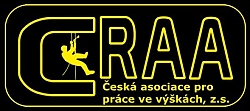4.4.6 Temperature rise
4.4.6.1 When tested in accordance with 5.7.4.1 and 5.7.4.2 with a rigid steel mass of 100 kg or a mass equivalent to the maximum rated load, whichever is the greater, none of the parts of Type C rope adjustment devices handled by the user to control the descent, when operated as described in the manufacturer’s instructions and information, shall develop a temperature higher than 48 °C during the descents.
The friction of the rope during the descent also heats the sheaves of the descender (Type C device).
None of the following brakes can meet the requirements of EN 12841:2006 (prEN 12841:2020) or EN 341:2011.
Nevertheless, these brakes have been used effectively for decades and many users still use them till now.
Subclause 4.4.6 Temperature rise does not solve the heating of the descender in relation to the damage of the rope but only the parts of the device handled by the user.
Nevertheless, these brakes meet the requirements of EN 12841: 2006 (prEN 12841: 2020) or EN 341:2011.
Descenders meet the requirements of the standard, but …
Did you notice some nuisance in the movie?
nuisance /ˈnjuːsns/ noun
[countable, usually singular] a thing, person or situation that is annoying or causes trouble or problems
[https://www.oxfordlearnersdictionaries.com/definition/english/nuisance?q=nuisance]
REGULATION (EU) 2016/425 OF THE EUROPEAN PARLIAMENT AND OF THE COUNCIL of 9 March 2016 on personal protective equipment and repealing Council Directive 89/686/EEC
ANNEX II
1.2. Innocuousness of PPE
1.2.1. Absence of inherent risks and other nuisance factors
PPE must be designed and manufactured so as not to create risks or other nuisance factors under foreseeable conditions of use.
Keeping the requirement 4.4.6 Temperature rise will no longer allow the production of descenders from the first image and similar (Stop, Indy, SRTE etc.)
The abolition of requirement 4.4.6 will allow these descenders to be produced and it will be up to the manufacturers to decide whether or not to produce them.
If manufacturers decide to produce these descenders, users will be able to decide whether they want to use them or not (some users certainly do).
At the same time, advertisements of the type: „I’m looking for Stop Petzl made before 2012 …“ will disappear from the bazaars 🙂
Thanks for your attention.
PS: Before deciding what is nuisance factor, let’s ask ourselves the following questions:
– How many gutters have I surpassed in the last 12 months?
– How many windows have I washed in the last 12 months?
– How many facades have I painted in the last 12 months?
– How many rope access jobs (each week in different work site) have I done in the last 12 months?
Do we really know what’s not nuisance factor?



